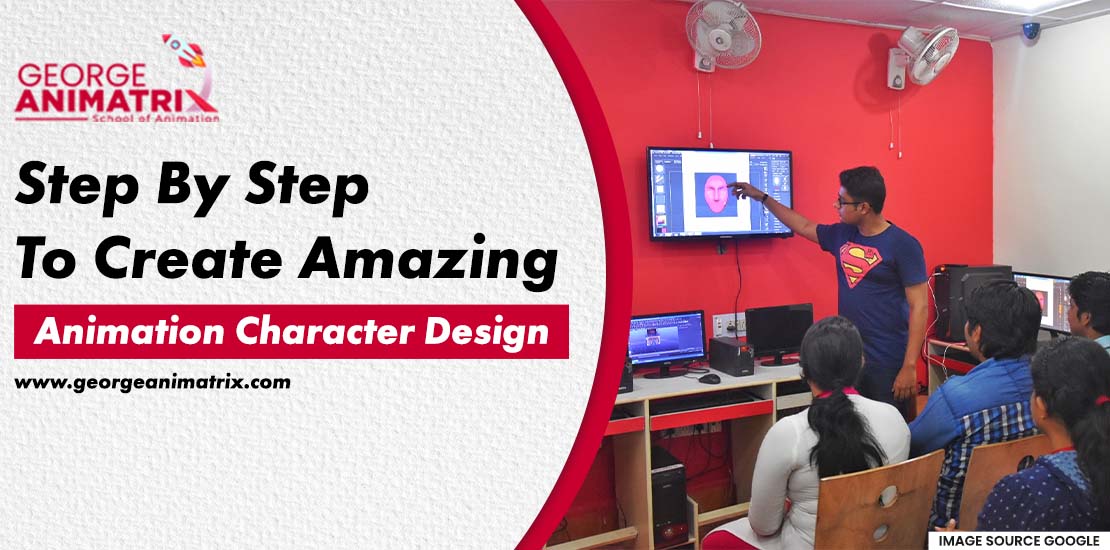Character Design in Animation: Creating Unique and Memorable Characters that Capture Audience Attention.
Animation is a captivating medium that has the power to tell stories and convey emotions in a unique and impactful way. The heart of any great animation is its characters. The characters are the foundation of the story, and they are the ones who bring it to life.
Whether it’s a cartoon, a movie, or a video game, the characters in an animation play a crucial role in engaging the audience and making the story memorable. You can learn advance animation tips from an animation course.
In this blog, we will explore the process of character design in animation and how to create unique and memorable characters that capture the audience’s attention.
Step 1: Understanding the Story and its World
The first step in creating a memorable character is to understand the story and the world in which it takes place. The character should be designed to fit seamlessly into the story and to reflect the world in which they exist. For example, if the story is set in a futuristic world, the character’s design should reflect that world’s technology and aesthetics. Understanding the world and the story will also help determine the character’s personality traits, motivations, and behaviors.
Step 2: Defining the Character’s Personality
Every character has a unique personality that defines who they are and how they interact with the world around them. The character’s personality should be defined early on in the design process to ensure that their appearance and behavior are consistent throughout the animation. When designing a character’s personality, consider their likes, dislikes, strengths, weaknesses, and motivations. These traits will help make the character relatable and engaging to the audience.
Step 3: Sketching the Character’s Design
Once you have a clear understanding of the character’s world and personality, it’s time to start sketching the character’s design. Sketching is an essential part of the design process as it allows you to explore different design options and refine the character’s appearance. When sketching, consider the character’s body shape, facial features, and clothing. The character’s design should reflect their personality and the world in which they exist. For example, if the character is a hero, their design should reflect their strength and confidence.
Step 4: Refining the Design
After sketching the character’s design, it’s time to refine it. Refining the design involves taking the rough sketches and turning them into a polished design that’s ready for animation. When refining the design, pay attention to the details such as the character’s facial expressions, clothing, and accessories. The character’s design should be consistent with the story, the world, and the personality you’ve defined for them.
Step 5: Adding Color
Once the character’s design is refined, it’s time to add color. The color scheme should reflect the character’s personality, the world they exist in, and the story. The color palette should also be consistent throughout the animation to ensure that the character is easily recognizable. When choosing colors, consider the emotions that each color evokes and how they fit with the character’s personality.
Step 6: Animating the Character
The final step in creating a memorable character is animating them. Animating a character involves bringing them to life through movement, facial expressions, and body language. When animating a character, consider their personality and the story they are a part of. The character’s movements and expressions should be consistent with their personality, and their body language should reflect their emotions.
Tips for Creating Memorable Characters
Creating memorable characters is an essential part of the animation process. Memorable characters can capture the audience’s attention, evoke emotions, and make the story unforgettable. Here are some tips for creating memorable characters:
Make the character relatable: The audience should be able to relate to the character on some level. This can be achieved by giving the character relatable traits, motivations, and behaviors. For example, a character who is afraid of heights or who has a fear of public speaking can be relatable to many people.
Design the character to fit the story: The character should be designed to fit seamlessly into the story and reflect the world in which they exist. For example, a character in a medieval fantasy world should have a design that reflects that world’s clothing, armor, and weapons.
Give the character a unique appearance: A character’s appearance can play a significant role in making them memorable. Giving the character a unique appearance can help them stand out and be easily recognizable. For example, adding distinctive features such as unusual hair or eye color can make the character more memorable.
Define the character’s personality: Every character has a unique personality that defines who they are and how they interact with the world around them. Defining the character’s personality early on in the design process can help ensure that their appearance and behavior are consistent throughout the animation.
Use body language and facial expressions: Body language and facial expressions can convey a lot about a character’s personality, emotions, and motivations. Animators should use body language and facial expressions to enhance the character’s personality and to make them more relatable to the audience.
Give the character a clear motivation: The character should have a clear motivation that drives their actions throughout the story. This motivation can be anything from a desire for revenge to a search for love. Giving the character a clear motivation can make them more relatable to
Gain the better insights of animation with animation training!
Direction:




